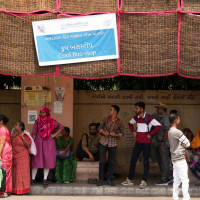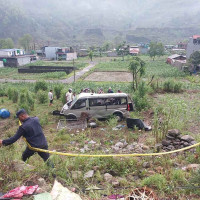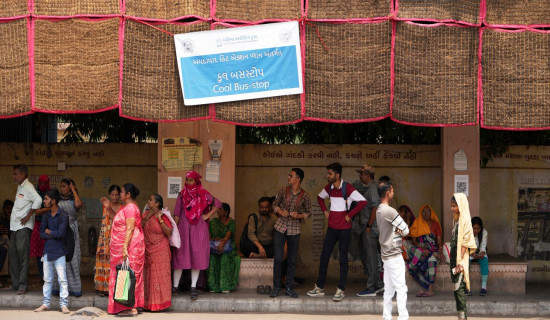- Thursday, 15 May 2025
Blockchain In Agriculture
Arun GC
Most people mistakenly perceive blockchain technology as a synonym for bitcoin or similar cryptocurrencies. In reality, cryptocurrency is just an application of blockchain technology. Indeed, cryptocurrencies have primarily contributed to the current level of popularity of blockchain. Due to the extensive use of blockchain in the finance industry, it sounds like the technology is for the finance sector only. Here, we will discuss the applications of blockchain technology in the agriculture supply chain.
Internet Generations
There are three generations of the internet. The first generation of the internet is about connexion. The second generation of the internet is about information, and the third generation of the internet is about the internet of value, also called Web 3.0. This generation of the internet is more community-interactive, more connected, more open, and more intelligent. Blockchain technology, smart contracts, machine learning, and artificial intelligence are examples of this generation.
The key functions of a traditional database are to create, read, update, and delete. Therefore, an owner of the database can perform this function, which raises the issue of authenticity and transparency. However, in a blockchain, you can only append data. You cannot edit or update the existing data. Therefore, it yields the highest degree of transparency.
Block Chain
Blockchain technology is primarily a distributed peer-to-peer ledger system. Contrary to the traditional Internet system, it does not have a centralized authority to store data. Under the current database system, stored data can be tampered with, misused, or hacked. However, the blockchain is practically a temper-proof and irrevocable system. That means, once a transaction is validated and locked in a block, it is immutable.
Just like an accountant who keeps records on a ledger, the first step in the blockchain is to create a block containing transaction information. Only you know what is written in the block. Once the information is complete, it will be distributed throughout the network for validation. Once the block is validated, it is locked and cannot be edited. A cryptographic technique called hashing is used to link each block, which creates an incredibly powerful technology to maintain immutability.
We are accustomed to the double-entry accounting system. Blockchain is fundamentally a three-entry accounting system with cryptography as the third entry. The technology is comparable to a laha (lac) seal in our culture. We refuse any parcel or letter bearing a tempered Laha seal. In the same manner, if a block is tempered, the complete chain will be rejected. The entire blockchain technology is a reinvention of ancient technology. Cryptography has a proven history dating back to Julius Caesar over 2000 years ago.
Supply Chain
There are several applications of blockchain technology in the agriculture sector. However, at this stage, the application of blockchain technology is extensive in supply chain management to ensure food safety and quality.
In the agriculture supply chain, there are a few primary concerns. Firstly, food fraud is one of the key issues. Several products are available on the market. However, it is very difficult, if not impossible, to verify that the food you are buying is genuine. Now people value safe food, organic food, and sustainable food systems. However, in the current era of globalisation, how can you verify that the food you are buying meets your criteria? Currently, we are relying on some sort of certification system. A new certification system means developing a new authority with new middlemen. Furthermore, it is costly to both the producers and the consumers. The introduction of blockchain technology can efficiently solve these issues.
Secondly, in the globalised economy and with the longer supply chain, there are increasing numbers of disputes that demand legal action. Disparate invoicing systems are a major concern. Currently, we are bringing these legal issues before the court, which may take several years to be concluded and cost a lot. However, an innovation within blockchain technology, a smart contract, can solve the issue very efficiently as compared to the traditional litigation system. Walmart-Canada has successfully implemented it, and it has been reported that it has reduced organisational disputes by 95%.
Thirdly, traceability is a key concern in the current management of the supply chain. When goods travel several thousand kilometres, changing several supply chain actors, the issue of traceability is very important. Traceability, in its most basic form, is the record of each transaction's one step backwards and one step forward along the supply chain. The application of blockchain provides a very strong and trustworthy traceability system. However, people may get concerned that if the information is distributed among all members of the network, what about one’s privacy? Indeed, blockchain uses Zero-Knowledge Proof (ZKP) technology. The ZKP enables users to verify the transaction without revealing private information. Of course, the blocks are distributed throughout the network for validation. However, the distributed blocks do not disclose any private information.
Fourthly, it eliminates the middlemen. The middlemen are not necessarily bad. In most cases, they are adding value to the food supply chain. However, an excessive number of intermediaries and, in some cases, a monopoly of the intermediaries, are not desirable. For instance, why do we need banks? When we receive a cheque we need to verify that the associated account has enough money to withdraw. Then, the bank debited the associated account with the stated amount and credited our account with the same amount. To perform these activities, the bank requires time and other resources. However, blockchain technology can perform these activities very efficiently using the hash function. It is similar in the case of the supply chain. We do not need any third party to verify that the transaction is accurate.
Fair Practice
Fifthly, the blockchain serves to demonstrate fair practices and compliance. The contemporary certification system for fair practices and its compliance is costly and not fully trustworthy. For example, you may notice a certification sticker on a product placed on the market. However, how can we fully believe that the sticker was just printed by someone else that is not certified? With blockchain technology, a single scan with your cell phone lets you see the history of the product's origin and its travel, along with the names of the involved stakeholders.
Finally, blockchain technology provides you with self-sovereign digital identity. Without a blockchain, we need some authority to verify our identity. It takes time and money. Further, there is also a chance of obtaining a false identity. However, blockchain provides a solution for this critical issue in the food supply chain.
At last, a big question arises: is it possible in our context? The answer would be that we have the option to adopt it and mainstream our supply chain in the global market or leave ourselves out. Indeed, we are not fully equipped with the required infrastructure, but it is not impossible to start up and progressively develop. Nonetheless, every technology might pose some risks, which we need to thoroughly consider.
(The author is currently working with FAO; Tweeter: @gcarun88.)








-square-thumb.jpg)




-original-thumb.jpg)


